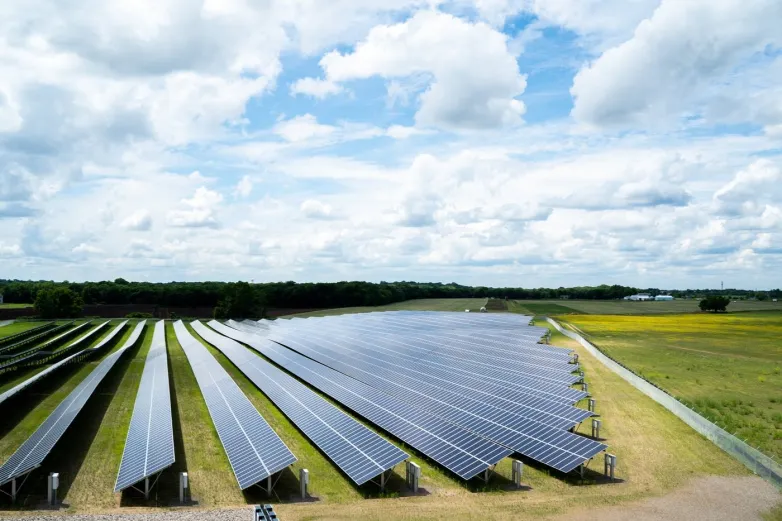Sherburne County may require solar farms to be pollinator-friendly
Sep 30, 2019 05:48 PM ET

New solar farms in Sherburne County may soon have to do more than just produce energy from the sun.
The county is considering requiring all new solar farms to include vegetation that supports pollinators, such as bees and butterflies.
Like other parts of Minnesota, Sherburne County — northwest of the Twin Cities — has seen the growth of community solar gardens in recent years.
It’s becoming more common for solar companies to plant native prairie grasses and flowers on large solar farms, but only a handful of Minnesota counties require it. Stearns County was the first Minnesota county to adopt a pollinator habitat requirement for solar farms, in 2016.
On Tuesday, the Sherburne County board of commissioners will decide whether to change its zoning ordinance to require new solar farms to avoid large-scale removal of trees, and to establish vegetative ground cover that supports wildlife.
"The benefit to the community and the environment is improving the habitat for not just for bees and pollinator butterflies, but to improve the habitat for other wildlife — smaller mammals, songbirds,” said Marc Schneider, county planner.
Rob Davis, director for the nonprofit Fresh Energy’s Center for Pollinators in Energy, said pollinator-friendly plants provide numerous benefits, including improving soil health and sequestering carbon in the soil.
“They're also really good at managing stormwater so they're capturing the water when it comes off the panels, channeling it straight down into the aquifer and preventing nutrient runoff,” Davis said.
Several solar companies have voiced support for Sherburne County's proposal, saying they already routinely plant pollinator habitat. They noted that native vegetation requires less maintenance and fertilizer than turf grass, and helps keep away noxious weeds.
There’s also evidence that pollinator-friendly vegetation helps create a cooler microclimate around solar panels, which helps their energy production, Davis said.
“So by having thicker vegetation under and around the panels, you’re generating more electricity — which actually for the county, results in more energy production tax revenue,” he said.
Also read

